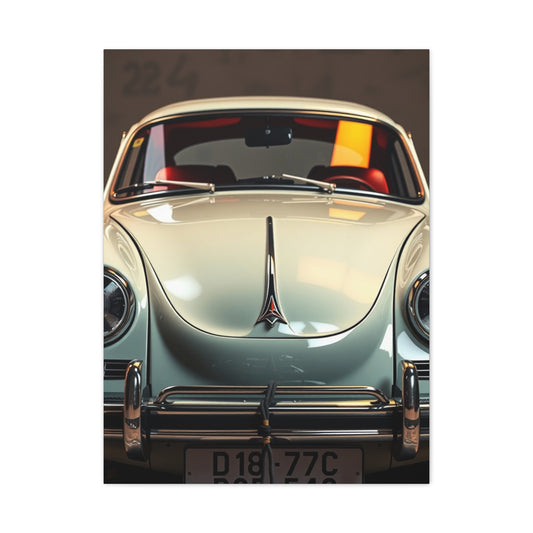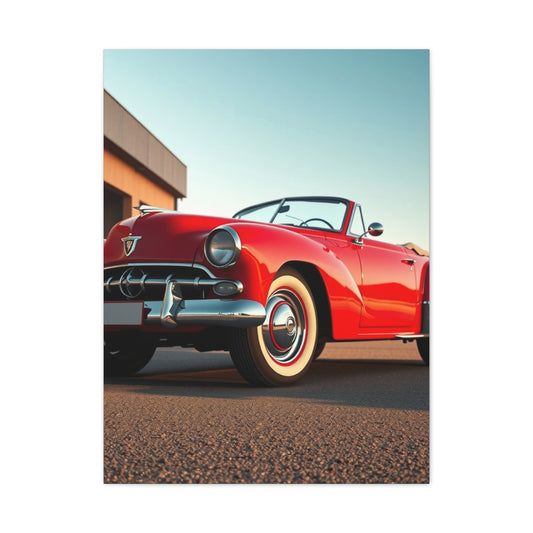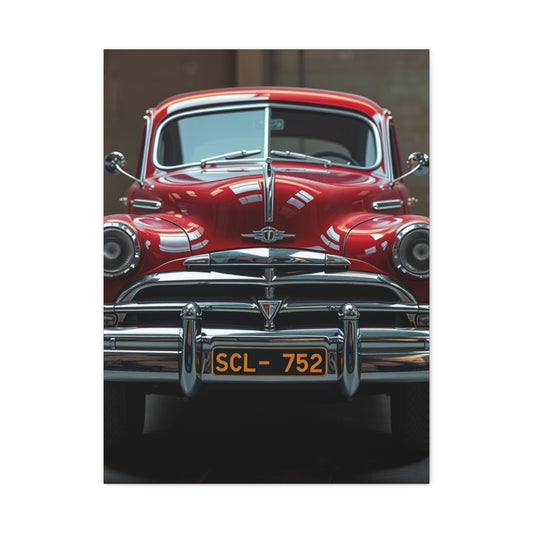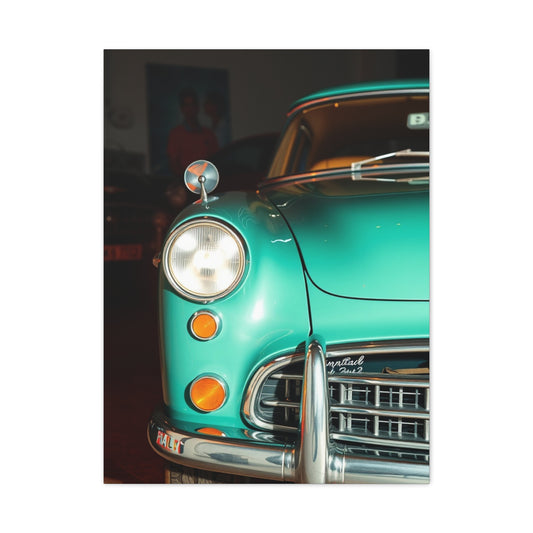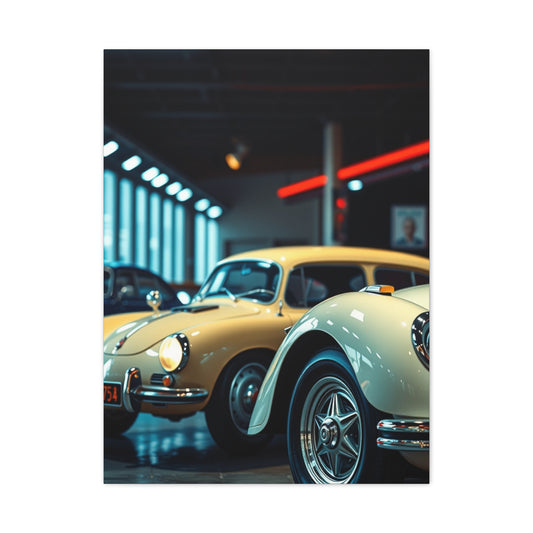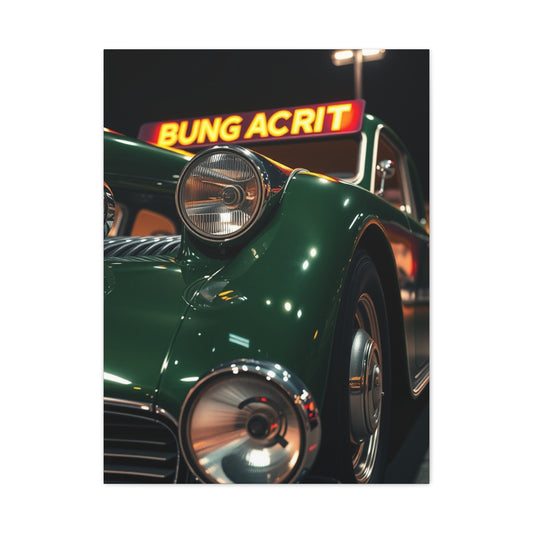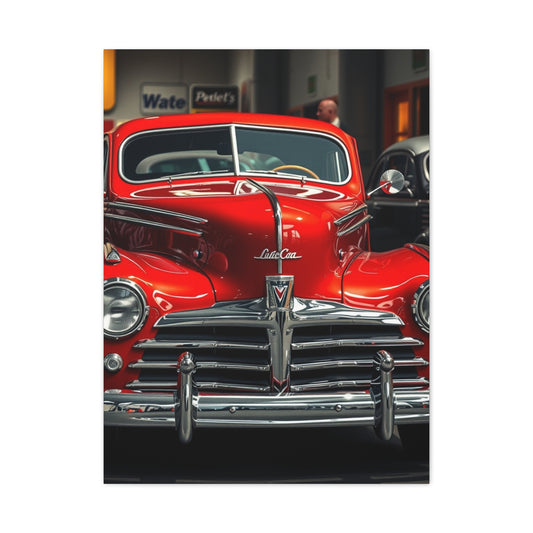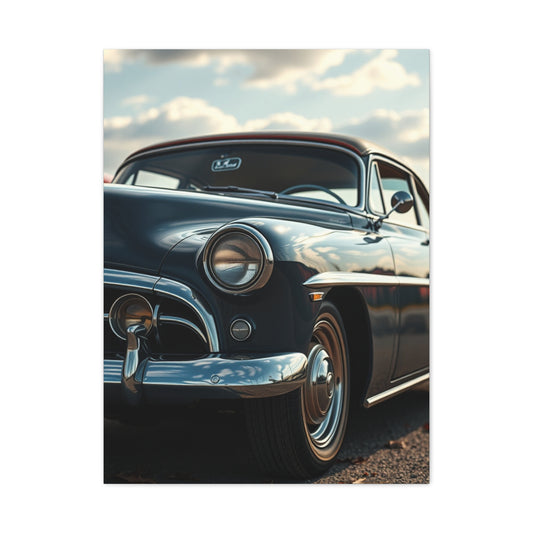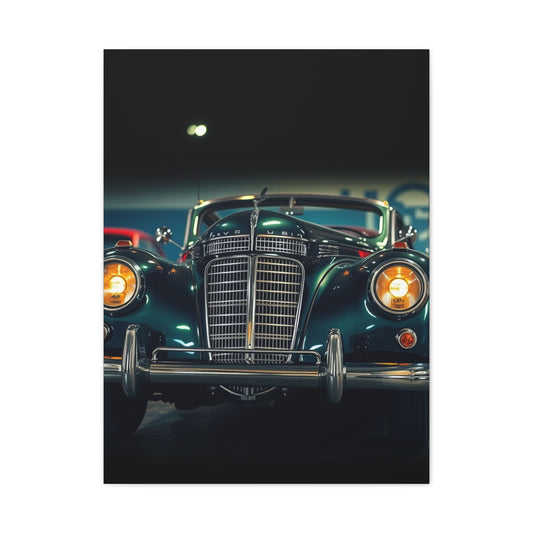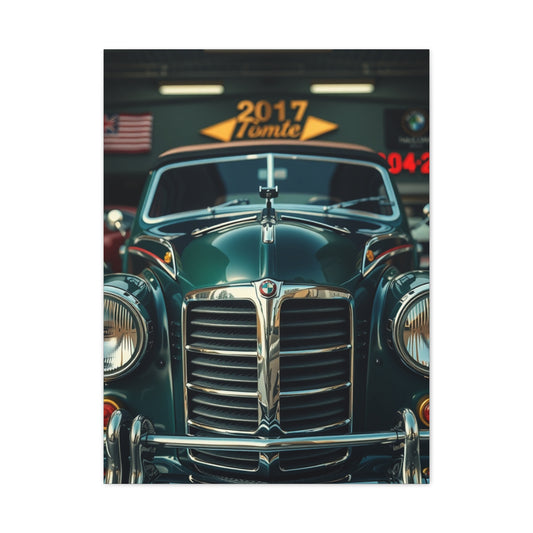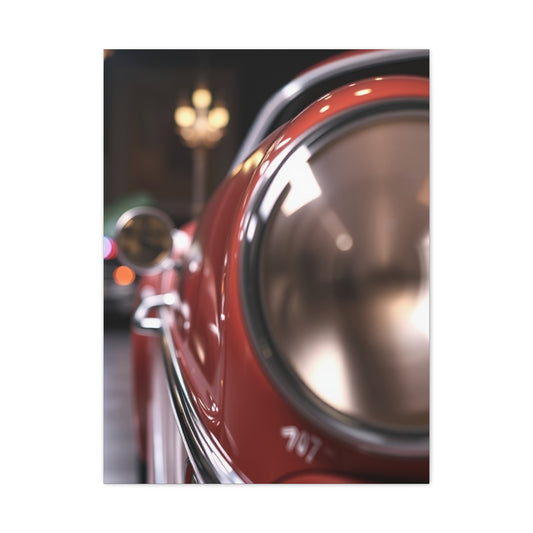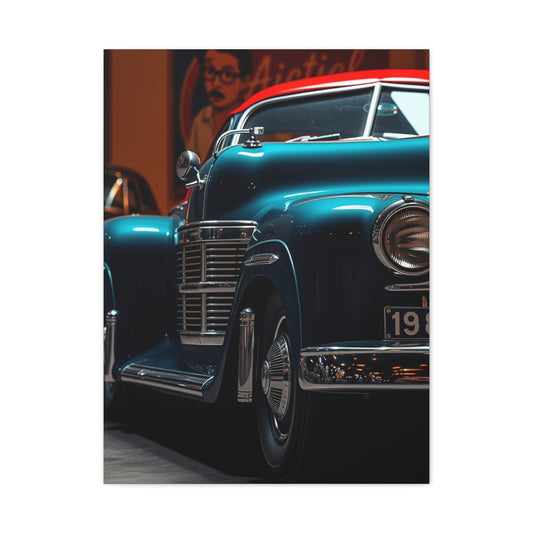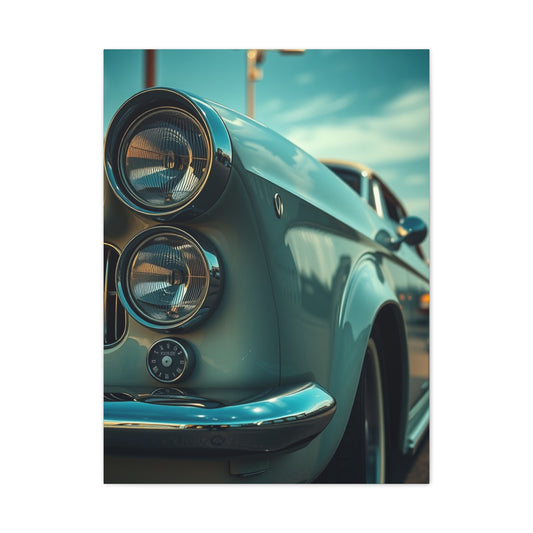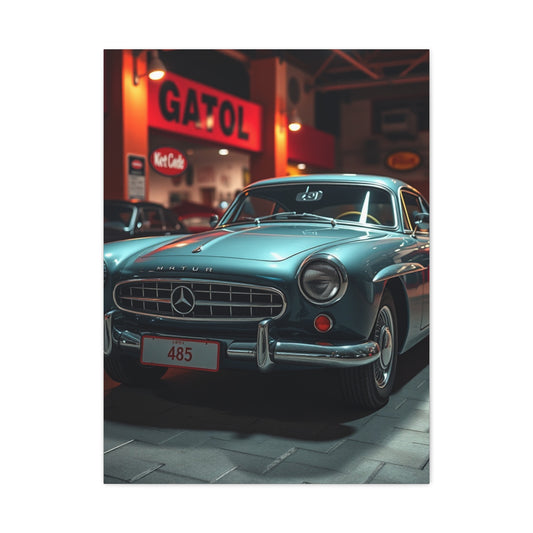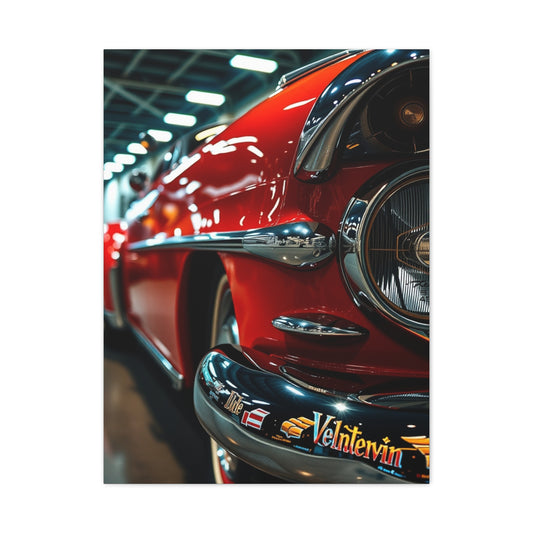-
Grand Touring Tableau Wall Art & Canvas Print
Regular price From $141.23 USDRegular priceUnit price per -
Vintage Vehicular Visions Wall Art & Canvas Print
Regular price From $141.23 USDRegular priceUnit price per -
Nostalgic Drive Collection Wall Art & Canvas Print
Regular price From $141.23 USDRegular priceUnit price per -
Timeless Wheels Artistry Wall Art & Canvas Print
Regular price From $141.23 USDRegular priceUnit price per -
Heritage Motoring Masterpiece Wall Art & Canvas Print
Regular price From $141.23 USDRegular priceUnit price per -
Legendary Car Legacy Canvas Wall Art & Canvas Print
Regular price From $141.23 USDRegular priceUnit price per -
Vintage Velocity Vignettes Wall Art & Canvas Print
Regular price From $141.23 USDRegular priceUnit price per -
Antiquarian Engine Artistry Wall Art & Canvas Print
Regular price From $141.23 USDRegular priceUnit price per -
Prestige Roadster Portraits Wall Art & Canvas Print
Regular price From $141.23 USDRegular priceUnit price per -
Heritage Highway Harmony Wall Art & Canvas Print
Regular price From $141.23 USDRegular priceUnit price per -
Antique Automobile Elegance Wall Art & Canvas Print
Regular price From $141.23 USDRegular priceUnit price per -
Deco Drive Opus Wall Art & Canvas Print
Regular price From $141.23 USDRegular priceUnit price per -
Retro Ride Revelry Art Wall Art & Canvas Print
Regular price From $141.23 USDRegular priceUnit price per -
Classic Car Reverie Canvas Wall Art & Canvas Print
Regular price From $141.23 USDRegular priceUnit price per -
Refined Retro Roadway Wall Art & Canvas Print
Regular price From $141.23 USDRegular priceUnit price per -
Opulent Automotive Odyssey Wall Art & Canvas Print
Regular price From $141.23 USDRegular priceUnit price per -
Historic Auto Aesthetic Wall Art & Canvas Print
Regular price From $141.23 USDRegular priceUnit price per -
Sophisticated Speed Legends Wall Art & Canvas Print
Regular price From $141.23 USDRegular priceUnit price per
Drive Into Style: Vintage Car Wall Art Ideas for Enthusiasts
Vintage car wall art represents more than just decoration; it is a celebration of design, history, and the ingenuity of the automotive industry. For car enthusiasts, incorporating images of classic cars into home or office spaces provides a way to merge personal passion with interior design. These pieces capture the timeless beauty of vintage vehicles, from the powerful lines of muscle cars to the elegant curves of luxury automobiles. Each print tells a story and evokes nostalgia for an era defined by creativity and innovation.
In modern interior design, personalized wall art has become increasingly popular. Advances in printing technology have made it possible for enthusiasts to create unique pieces that reflect their tastes and interests. With the right images and print formats, vintage car art can enhance any space, making it visually striking and deeply personal. The process of selecting, customizing, and displaying these prints is a rewarding experience for those who wish to showcase their automotive appreciation in style.
The Appeal of Vintage Car Art
Vintage cars continue to captivate people of all ages. They are not only admired for their aesthetic beauty but also for their engineering, history, and cultural significance. Classic cars, whether they are iconic American muscle cars or European luxury models, symbolize a combination of innovation and artistry. Displaying these vehicles through wall art allows enthusiasts to bring the allure of classic automobiles into their everyday environment.
A striking canvas print of a 1950s hot rod or a 1960s Corvette can serve as a focal point in any room. It sparks conversation and provides a visual connection to a fascinating period in automotive history. Personalized vintage car art also carries an emotional appeal, especially when it features a beloved car model or a memorable moment associated with the vehicle. It is a way of keeping history alive and celebrating the culture of automotive design.
Personalized Vintage Car Wall Décor
Creating personalized vintage car wall art allows enthusiasts to make each piece truly unique. Mass-produced prints are widely available, but they rarely reflect an individual's personal style or connection to the subject. By using custom printing techniques, it is possible to produce high-quality images that are tailored to specific tastes, whether through photographs of actual cars, digitally created designs, or artistic interpretations of classic vehicles.
Personalized art is also an ideal gift for car lovers. A print featuring a favorite car or a special model owned by a friend or family member carries emotional significance. It shows thoughtfulness and attention to detail, transforming wall art into a cherished keepsake. Additionally, creating your own wall décor provides the freedom to experiment with color schemes, formats, and display arrangements, ensuring that the final piece complements the intended space perfectly.
Selecting the Perfect Image
The first step in designing vintage car wall art is selecting an image that captures the desired aesthetic and mood. This could be a photograph taken at a car show, a personal snapshot of a vehicle, or a high-quality stock image that is available for personal use. Each choice has its benefits: personal photos evoke memories, while professionally captured images offer polished and detailed representations of the vehicles.
Modern tools also allow for creative experimentation. Digital editing and AI-based design platforms can generate new interpretations of classic cars, combining elements of realism and artistic flair. The goal is to choose an image that not only represents the car accurately but also aligns with the décor style of the space where it will be displayed. Consideration should be given to color balance, composition, and the overall visual impact of the artwork when selecting the perfect image.
Print Formats and Material Choices
Once the image is chosen, selecting the appropriate print format is essential. Canvas prints are ideal for a traditional, classic look, offering a textured surface that adds depth and richness to the image. Metal prints provide a modern, sleek aesthetic, emphasizing sharp lines and vibrant colors, while acrylic prints offer a glossy finish that enhances the visual impact and adds dimensionality.
Different materials can dramatically change the perception of the artwork in a space. Canvas evokes a sense of warmth and timelessness, metal exudes sophistication and modernity, and acrylic combines brilliance with a contemporary touch. Choosing the right format depends on the intended location, lighting, and overall interior design concept. High-quality printing ensures that colors remain vibrant and details are preserved, allowing the artwork to stand out and complement the surrounding environment.
The Emotional Connection
Vintage car wall art is more than decoration; it creates an emotional connection. Each print reflects a passion for automobiles, a nostalgia for bygone eras, and an appreciation for design excellence. When displayed in a living room, office, or personal space, the artwork serves as a reminder of experiences, dreams, and inspirations tied to the automotive world.
For collectors and enthusiasts, this connection is particularly strong. A print of a rare model or a historically significant car becomes a tangible representation of the owner’s passion and knowledge. Personalized wall art amplifies this effect, making the space uniquely theirs. Even casual admirers of classic cars can enjoy the aesthetic and storytelling aspects of these prints, making vintage car art a versatile choice for any interior.
Placement and Display
The placement of vintage car wall art is critical to its impact. Large prints can dominate a wall and serve as a focal point, while smaller pieces can complement other décor elements. Arrangements can be linear, clustered, or gallery-style, depending on the style of the room and the number of images available.
Lighting also plays a significant role. Proper illumination highlights the details and colors of the print, creating a striking visual effect. Consideration of surrounding colors, textures, and furniture is necessary to ensure the artwork harmonizes with the environment. Strategic placement not only enhances the visual appeal but also allows the car art to become an integral part of the space’s design narrative.
Integrating Vintage Car Art Into Interior Design
Incorporating vintage car wall art into interior design requires a thoughtful approach. The style of the print should resonate with the room’s theme. For instance, a retro muscle car poster complements industrial or vintage-inspired interiors, while sleek metal prints of classic European cars suit modern, minimalist spaces.
Layering multiple prints or combining different formats can create a dynamic and engaging display. Color coordination between the prints and other elements in the room enhances cohesion. Textures, materials, and complementary décor items such as furniture, rugs, and lighting contribute to a balanced and visually appealing setup. The objective is to make the artwork feel integrated rather than an isolated element, allowing it to enhance the room’s character seamlessly.
Exploring the History and Influence of Vintage Cars
Understanding the history of vintage cars provides a deeper appreciation for the wall art inspired by them. Vintage automobiles are more than machines; they represent cultural shifts, technological innovation, and timeless design aesthetics. From the early 20th century to the 1970s, car design evolved rapidly, reflecting changing consumer preferences and engineering breakthroughs. Each era produced vehicles with distinct features, shapes, and personalities, and these characteristics often influence the way artists and designers depict them in wall art.
Classic cars from the 1920s and 1930s often emphasize elegance and luxury, with flowing lines and intricate detailing. These vehicles were symbols of sophistication and craftsmanship, and wall art featuring them often conveys a sense of refinement and nostalgia. In contrast, cars from the 1950s and 1960s, such as muscle cars and American classics, highlight power and bold design. The curves, chrome accents, and vivid colors of these vehicles lend themselves to dynamic and eye-catching wall art that evokes energy and passion.
The evolution of European sports cars during the mid-20th century also plays a significant role in vintage car art. Brands known for precision engineering and sleek designs created cars that were both functional and visually stunning. Capturing these vehicles in wall art requires attention to detail and a focus on lines, proportions, and color schemes that reflect their heritage. By understanding these historical and cultural contexts, enthusiasts can select art that resonates personally and complements their living or working spaces.
Techniques for Capturing Classic Cars in Art
The methods used to create vintage car wall art are varied, ranging from traditional photography to digital design and painting. Each approach brings its own strengths and style, allowing enthusiasts to find pieces that match their aesthetic preferences.
Photography is perhaps the most direct method, capturing real vehicles with accuracy and realism. High-quality photographs can highlight intricate details such as chrome trim, tire patterns, and interior textures. Professional photographers often use controlled lighting and composition techniques to create dramatic and visually striking images. For those seeking personalized art, photographing a favorite car model or attending a car exhibition provides an opportunity to create unique images tailored to individual taste.
Digital art and graphic design offer flexibility and creativity beyond photography. Artists can manipulate color schemes, backgrounds, and textures to create a specific mood or theme. AI-powered tools now allow for the generation of entirely new designs inspired by vintage car aesthetics. This approach enables the creation of imaginative pieces that blend realism with artistic interpretation, making each artwork distinctive.
Traditional painting, including oils, acrylics, and watercolors, provides a classic and timeless feel. Paintings allow for expressive interpretations of vehicles, capturing not just their physical form but also the emotions and stories associated with them. This method is particularly suited for creating a sense of nostalgia or romanticizing a particular era in automotive history.
Choosing the Right Style for Your Space
Selecting the appropriate style of vintage car wall art is essential for achieving a harmonious interior design. The style should reflect both the personality of the space and the preferences of the individual displaying the artwork.
For modern and minimalist interiors, sleek metal or acrylic prints of classic cars with bold, clean lines are ideal. These materials emphasize precision and sophistication, complementing contemporary décor. In contrast, vintage-inspired or rustic spaces benefit from canvas prints, paintings, or sepia-toned photography that evoke warmth and nostalgia. The textured surface of canvas can soften the image, creating a more inviting and approachable feel.
Consider the size and scale of the artwork as well. Large statement pieces can serve as focal points, drawing attention and adding drama to a room. Smaller prints can be grouped in a gallery-style arrangement, providing visual interest and a cohesive theme. Balancing the artwork with other elements in the room, such as furniture, lighting, and color schemes, ensures that the space feels intentional and well-designed.
Color and Composition in Vintage Car Art
Color and composition play crucial roles in the impact of vintage car wall art. The choice of color palette can influence the mood of the room and highlight specific features of the vehicle. Bold, saturated colors such as red, yellow, or blue often convey energy and excitement, making the artwork stand out. Softer tones or monochromatic schemes, on the other hand, create a more subtle and sophisticated ambiance.
Composition determines how the viewer’s eye moves across the artwork and interacts with the vehicle. Techniques such as framing the car at an angle, using diagonal lines, or incorporating background elements can add depth and dynamism. Attention to perspective and balance ensures that the artwork feels cohesive and visually appealing. A well-composed piece captures both the essence of the car and the aesthetic preferences of the observer.
Display Techniques and Placement Ideas
The way vintage car wall art is displayed can enhance its impact and integration into the space. Placement considerations include wall height, surrounding décor, lighting, and the relationship between multiple pieces.
Gallery-style arrangements are popular for enthusiasts who wish to display multiple prints together. This technique allows for storytelling through a sequence of images, showcasing different car models, eras, or artistic interpretations. Horizontal or vertical alignment can create rhythm and flow, while asymmetrical arrangements add a contemporary, eclectic feel.
Individual statement pieces are effective in highlighting a single iconic vehicle. Positioning these prints at eye level, using accent lighting, or placing them above furniture such as sofas, desks, or console tables maximizes visual impact. Reflective surfaces, such as glass or metal frames, can enhance colors and details, creating a striking focal point in the room.
Incorporating Personal Touches
Adding personal touches to vintage car wall art increases its meaning and uniqueness. Personal photographs, memorabilia, or custom illustrations can transform a piece from generic decoration to a highly individualized statement.
For example, a photograph of a cherished car, a print of a family-owned classic vehicle, or an artistic rendering inspired by personal experiences creates a connection that goes beyond aesthetics. Customizing the background, colors, or style allows the artwork to reflect not only the vehicle but also the personality and taste of the owner. These personal touches make the space feel curated and thoughtful, showcasing both passion and individuality.
The Emotional Impact of Automotive Art
Vintage car wall art has a powerful emotional impact, particularly for enthusiasts. It evokes memories, admiration, and inspiration, creating a connection between the viewer and the history or story of the vehicle.
Art featuring classic cars can inspire creativity, fuel nostalgia, or even motivate action, such as the pursuit of restoration projects or collection building. Displaying these pieces in personal or professional spaces creates an atmosphere of passion and sophistication, reflecting the values and interests of the individual. The artwork becomes more than decoration; it is a form of expression and a celebration of a shared cultural appreciation for automotive history.
Maintaining and Caring for Wall Art
Proper care is essential to preserve the beauty and longevity of vintage car wall art. Different print materials require specific maintenance techniques. Canvas prints should be kept away from direct sunlight and excessive humidity to prevent fading and warping. Metal prints can be cleaned with a soft, dry cloth to remove dust and smudges, while acrylic prints benefit from gentle wiping using a microfiber cloth and non-abrasive cleaner.
Ensuring the artwork is properly mounted and framed also contributes to its durability. High-quality frames and hanging hardware prevent damage and ensure that the piece remains securely displayed. Regular inspection and careful handling preserve both aesthetic appeal and structural integrity, allowing the artwork to be enjoyed for years to come.
Collecting and Curating Vintage Car Art
Collecting vintage car wall art is a rewarding pursuit for enthusiasts who appreciate both the vehicles and the artistic representations. Collectors often seek pieces that reflect specific eras, car models, or design styles. Curating a collection allows for thematic coherence and provides opportunities to explore different artistic approaches, materials, and techniques.
A thoughtfully curated collection can transform a living space into a personal gallery, showcasing the diversity and beauty of vintage cars. The combination of historical significance, artistic quality, and personal relevance makes collecting automotive art an engaging and meaningful hobby. Each piece becomes part of a larger narrative, celebrating the evolution of car design and the passion of the collector.
Advanced Personalization of Vintage Car Wall Art
Personalization elevates vintage car wall art from a decorative piece to a deeply meaningful expression of taste and passion. Modern printing techniques allow enthusiasts to incorporate their own photographs, digital illustrations, or customized designs into artwork. This customization creates a unique piece that reflects both personal style and automotive appreciation.
Photographs of personal vehicles or memorable encounters with classic cars can be transformed into high-quality wall art. These images can be enhanced with digital editing tools to adjust color balance, contrast, and composition, ensuring a polished final product. By adding creative elements such as text, artistic filters, or background alterations, the artwork becomes more than a representation of a car—it becomes a visual narrative of personal experiences and automotive admiration.
Digital illustration is another powerful tool for personalization. Artists and enthusiasts can create stylized representations of favorite cars, combining realism with creative interpretation. This approach allows for experimentation with color, form, and background elements. Enthusiasts can also collaborate with designers to produce custom illustrations that capture their vision, ensuring a truly one-of-a-kind piece for display.
Incorporating Memories and Stories
Vintage car wall art can also serve as a repository of memories and stories. Artwork featuring cars owned by family members, vehicles admired during childhood, or iconic models from a favorite era can evoke powerful emotions. Each piece tells a story, allowing viewers to reminisce about personal experiences or moments shared with others.
Some enthusiasts choose to combine photographs and digital enhancements to create collages that highlight a car’s history or journey. By including dates, locations, and events in the design, the artwork becomes a personal chronicle that celebrates the life and legacy of the vehicle. Displaying these pieces in homes or offices provides a continuous reminder of cherished memories, connecting the past with the present.
Creative Display Solutions
The way vintage car wall art is displayed can transform a space and create a visually compelling environment. Beyond traditional placement, creative solutions allow for dynamic presentation that enhances the impact of the artwork.
Gallery walls are a popular method for displaying multiple pieces in a cohesive arrangement. Enthusiasts can group prints by era, car type, or color scheme to create a visually striking narrative. Symmetrical layouts create balance and harmony, while asymmetrical arrangements offer a more modern and eclectic look. Adding frames of varying textures and materials, such as wood, metal, or acrylic, further enhances the aesthetic and adds depth to the display.
Floating shelves, ledges, and multi-tiered displays provide alternative ways to showcase smaller prints or complementary memorabilia. These arrangements allow for flexibility in composition and make it easier to swap out pieces over time. Incorporating three-dimensional objects, such as miniature car models or automotive collectibles, adds dimension and interactivity to the display, bridging the gap between two-dimensional art and physical artifacts.
Lighting Techniques for Wall Art
Lighting plays a critical role in highlighting vintage car wall art and enhancing its visual appeal. Proper illumination accentuates colors, textures, and details, ensuring that the artwork stands out in any environment.
Track lighting or adjustable spotlights allow for precise focus on individual pieces, drawing attention to key elements of the vehicle. Warm lighting can create a cozy and nostalgic ambiance, while cooler lighting emphasizes sleek, modern aesthetics. Natural light can also be utilized effectively, though care must be taken to prevent fading or damage over time.
For larger displays or gallery-style arrangements, ambient lighting combined with accent lights can create depth and dimension. Layered lighting techniques enhance the overall presentation and contribute to a professional, gallery-quality look, transforming a simple wall into a curated exhibition of automotive art.
Exploring Different Artistic Styles
Vintage car wall art comes in a wide range of artistic styles, each offering a unique visual experience. Traditional realism captures vehicles with photographic accuracy, emphasizing intricate details, textures, and colors. These pieces are ideal for enthusiasts who value precision and authenticity.
Impressionistic and abstract styles provide a different approach, focusing on mood, color, and emotion rather than strict realism. These pieces evoke feelings of movement, speed, or nostalgia, and allow for creative interpretation of classic cars. Pop art and graphic design-inspired prints bring bold, energetic aesthetics to a space, often using vibrant colors and stylized forms to create striking visual statements.
Combining styles within a display can create dynamic contrast and interest. For example, pairing a realistic photograph of a classic car with an abstract or pop-art-inspired piece highlights both the accuracy and creativity inherent in automotive design. Exploring different styles allows enthusiasts to curate a collection that reflects personal taste while celebrating the artistry of classic automobiles.
Materials and Durability
The choice of material affects both the visual impact and durability of vintage car wall art. Canvas prints offer texture and a traditional feel, while metal prints emphasize modernity and clarity. Acrylic prints provide a glossy finish that enhances depth and color vibrancy, creating a striking presentation for contemporary spaces.
Durability is also a consideration, especially in environments with fluctuating temperatures or humidity. Metal prints resist warping and are easy to clean, making them suitable for kitchens, offices, or high-traffic areas. Canvas and acrylic prints may require careful handling and protection from direct sunlight to preserve their appearance over time. Choosing the right material ensures that the artwork remains visually appealing and structurally sound for years to come.
Incorporating Technology
Technology has expanded the possibilities for vintage car wall art. High-resolution scanning, digital editing, and AI-based design tools allow enthusiasts to create artwork with exceptional detail and clarity. Customization software enables precise control over image size, color adjustments, and composition, ensuring that prints are tailored to the specific space where they will be displayed.
Augmented reality and virtual design platforms allow users to visualize how artwork will look in their home or office before printing. This approach reduces uncertainty, making it easier to select the right size, format, and arrangement. Technology has also made it possible to produce large-format prints without sacrificing quality, providing impressive statement pieces that dominate a room and showcase automotive passion.
The Role of Scale in Wall Art
Scale is an important factor in creating visual impact. Large-format prints serve as focal points, commanding attention and providing g dramatic effect. They work well in open spaces such as living rooms, offices, or garages, where they can be appreciated from multiple vantage points.
Smaller prints offer versatility and can be used in clusters, creating a gallery effect. These arrangements allow for thematic storytelling, such as displaying a series of muscle cars, luxury vehicles, or iconic designs from a particular era. Balancing scale with wall space, furniture, and other design elements ensures that the artwork enhances the environment rather than overwhelming it.
Collecting Vintage Car Wall Art
Collecting vintage car wall art is a fulfilling pursuit that combines a passion for automobiles with an appreciation for artistic expression. Collectors often focus on specific themes, eras, or types of vehicles, building cohesive and meaningful displays.
Curation involves selecting pieces that complement each other, whether through color, style, or subject matter. It is also an opportunity to explore a variety of artists and techniques, from photography to painting and digital design. Collecting allows enthusiasts to showcase their knowledge and taste, turning a living or working space into a personal gallery that celebrates the history and artistry of classic cars.
Combining Art with Other Decor Elements
Vintage car wall art can be integrated seamlessly with other décor elements to create a cohesive and visually engaging space. Complementary items such as automotive memorabilia, vintage signs, or model cars enhance the theme and add depth. Textures, materials, and furniture choices should align with the aesthetic of the artwork, whether traditional, modern, or eclectic.
Layering art with other design elements also allows for visual storytelling. For example, a series of prints paired with a display of personal car photographs or trophies creates a narrative that reflects the collector’s experiences and interests. Thoughtful integration ensures that the artwork feels intentional and enhances the overall character of the space.
Preserving the Value of Wall Art
Proper maintenance is essential to preserve the quality and value of vintage car wall art. Avoiding direct sunlight, controlling humidity, and handling prints carefully prevent damage and fading. High-quality framing and secure mounting protect the artwork from physical impact, ensuring longevity.
Collectors and enthusiasts may also consider documentation of provenance, especially for rare or limited-edition pieces. This practice not only maintains value but also provides historical context, adding significance to the artwork and deepening its connection to automotive heritage.
Future Trends in Vintage Car Wall Art
Vintage car wall art continues to evolve as both an artistic and cultural phenomenon. Emerging trends in design, printing technology, and interior décor are shaping the way enthusiasts engage with automotive art. One prominent trend is the fusion of traditional and digital techniques. While classic photography and painting remain popular, digital manipulation, 3D rendering, and AI-assisted design are expanding creative possibilities. These methods allow artists to explore new perspectives, exaggerate forms, and experiment with color palettes in ways that were previously difficult or impossible.
Another trend is the emphasis on storytelling and narrative within wall art. Rather than displaying a single car image, collectors and designers are creating series that chronicle the history of specific models, brands, or automotive eras. These collections tell a story, inviting viewers to appreciate not only the car itself but also the broader context of its design, production, and cultural impact.
Sustainability is also influencing the production of wall art. Eco-conscious materials, such as recycled canvases and low-emission inks, are becoming more widely available. These options allow enthusiasts to indulge in their passion for vintage cars while making environmentally responsible choices.
Exploring Iconic Models and Their Artistic Influence
Certain vintage car models have left an indelible mark on both automotive history and the world of art. Iconic vehicles such as the Ford Mustang, Chevrolet Corvette, Jaguar E-Type, and Porsche 911 have inspired countless artworks due to their distinctive designs and cultural significance. These cars serve as symbols of innovation, luxury, or performance, and their presence in wall art instantly conveys a sense of style and admiration.
Artists often focus on specific details that make these models memorable. The curvature of a fender, the shine of chrome accents, or the sleekness of aerodynamic lines becomes central to the composition. By highlighting these elements, wall art captures the essence of the car while transforming it into a piece of visual storytelling. Enthusiasts who choose art featuring iconic models are not only celebrating the vehicles themselves but also the broader history and culture they represent.
Creating Immersive Automotive Spaces
Beyond individual pieces, vintage car wall art can help create immersive automotive-themed spaces. Combining multiple prints, memorabilia, and three-dimensional elements transforms a room into an environment that reflects the owner’s passion. For example, a garage, office, or living area can be designed as a mini gallery or showroom, showcasing both artwork and collectibles.
Layering prints of various sizes and materials, such as canvas, metal, and acrylic, creates depth and visual interest. Incorporating complementary décor items, including car models, vintage signage, or period-specific furniture, enhances the immersive experience. Lighting plays a critical role in these spaces, with carefully positioned accent lights emphasizing key pieces and creating dramatic visual effects. The result is a space that is engaging, cohesive, and highly personalized.
Integrating Technology and Interactive Elements
Technology continues to expand possibilities for vintage car wall art. Augmented reality applications allow viewers to interact with artwork in new ways, providing additional information about the car’s history, design, or performance. QR codes embedded in or near wall art can link to multimedia content, such as videos, interviews, or interactive galleries, enhancing the educational and entertainment value of the display.
Digital frames and screens offer another interactive approach, allowing enthusiasts to rotate between multiple images or customize the display based on mood or theme. This flexibility ensures that wall art remains dynamic, engaging, and adaptable to changing tastes or seasonal décor adjustments. These technological innovations allow automotive art to transcend static representation, offering immersive and evolving experiences for viewers.
Collecting and Curating for Long-Term Value
For serious enthusiasts, collecting vintage car wall art is both a passion and an investment. Curated collections showcase a cohesive theme, whether focusing on a particular era, brand, or type of vehicle. Attention to provenance, artist reputation, and print quality enhances both aesthetic enjoyment and long-term value. Limited edition prints or artworks by renowned artists may appreciate over time, adding an element of investment potential to the collection.
Curating a collection involves thoughtful planning. Balancing color schemes, styles, and sizes ensures that the display is visually appealing and harmonious. Arranging prints in chronological order or by thematic groupings allows viewers to appreciate the evolution of car design and artistic interpretation. Collectors often rotate pieces to refresh the visual experience, keeping the display engaging and reflective of evolving tastes.
Inspiration from Automotive Culture
Vintage car wall art draws inspiration from broader automotive culture, including racing history, car shows, and industrial design. Photographs from iconic races, illustrations of legendary vehicles, and depictions of automotive milestones provide rich visual content for wall art. These works not only celebrate the aesthetics of vehicles but also capture the excitement, innovation, and competitive spirit of the automotive world.
Enthusiasts can also draw inspiration from automotive photography, street art, and contemporary design trends. Combining traditional car imagery with abstract or stylized elements allows for unique interpretations that stand out in any space. This creative flexibility ensures that wall art remains fresh, engaging, and aligned with personal tastes.
Enhancing Emotional Connection
Vintage car wall art is powerful because of the emotional connection it fosters. Each piece represents more than a vehicle; it embodies memories, aspirations, and admiration for craftsmanship and design. Artwork featuring cars from formative years, family-owned vehicles, or dream cars evokes nostalgia and personal reflection.
This emotional connection can be further enhanced by customizing prints with personal photographs, dates, or meaningful text. Adding these elements transforms a piece from a visual decoration into a story-driven representation of personal experiences and passions. Displaying such artwork in personal spaces reinforces identity, celebrates achievements, and provides daily inspiration.
Practical Tips for Display and Arrangement
Arranging vintage car wall art requires careful consideration of scale, spacing, and visual flow. Large statement pieces benefit from prominent placement where they can command attention, such as above a sofa, desk, or mantel. Smaller prints work well in grouped arrangements, allowing for thematic storytelling or color coordination.
Spacing between pieces should be consistent to maintain balance, but slight variations can create visual interest and prevent monotony. Mixing print sizes and materials adds depth, while considering lighting angles ensures that each piece is showcased effectively. Incorporating other decorative elements, such as car-themed accessories or complementary artwork, enhances the overall cohesion of the space.
The Role of Color and Mood
Color choice in vintage car wall art significantly influences the mood of the room. Bold colors, such as red, yellow, or blue, convey energy and excitement, while muted tones or monochromatic palettes create sophistication and elegance. Matching or contrasting colors with existing décor elements can strengthen the visual impact and create harmony within the space.
Consideration of color extends beyond the vehicles themselves. Backgrounds, artistic effects, and framing options all contribute to the overall aesthetic. For instance, sepia-toned prints evoke nostalgia and timelessness, while vivid, high-contrast images create a contemporary and dynamic atmosphere. Understanding the interplay of color and mood allows enthusiasts to curate artwork that enhances both the visual and emotional environment.
Seasonal and Rotating Displays
Enthusiasts may choose to rotate vintage car wall art seasonally or based on personal preference. This approach keeps displays fresh and allows for thematic changes throughout the year. Rotating prints also provides the opportunity to highlight different models, eras, or artistic styles, keeping the collection engaging and dynamic.
Temporary exhibitions or feature walls can showcase a specific subset of the collection, such as muscle cars, luxury vehicles, or race cars. This flexibility enables enthusiasts to adapt their space to reflect current interests or seasonal décor trends while maintaining a cohesive and visually appealing environment.
Incorporating Memorabilia and Mixed Media
Vintage car wall art can be enhanced through the integration of memorabilia and mixed media elements. Model cars, vintage signs, automotive tools, and other collectibles complement the visual impact of prints and create a richer, more immersive environment.
Three-dimensional elements provide depth and contrast, bridging the gap between two-dimensional artwork and physical objects. This approach allows for creative expression and personalization, turning a wall into a curated automotive showcase that reflects both aesthetic taste and passion for cars.
Inspirational Ideas for Enthusiasts
For those seeking inspiration, there are countless ways to approach vintage car wall art. Combining historical imagery with modern design, juxtaposing classic cars with abstract elements, or creating themed gallery walls based on eras, brands, or car types, all provide unique avenues for creativity.
Incorporating personal experiences, such as photographs from car shows or restoration projects, adds authenticity and individuality to the display. Using lighting, scale, and material variations further enhances visual impact, creating spaces that are both functional and expressive. Enthusiasts can experiment with different layouts, frame types, and color palettes to achieve a display that resonates personally and visually.
Conclusion:
Vintage car wall art is a powerful medium for expressing passion, creativity, and appreciation for automotive history. From selecting iconic models to customizing prints, arranging displays, and integrating complementary elements, enthusiasts have the opportunity to transform spaces into reflections of personality and taste.
By embracing current trends, utilizing modern technology, and exploring creative possibilities, collectors and enthusiasts can create unique, engaging, and visually stunning displays. Each piece of artwork tells a story, evokes emotion, and celebrates the artistry of classic cars, making vintage car wall art a timeless addition to homes, offices, and personal collections.
Ultimately, the combination of historical appreciation, creative expression, and personal connection ensures that vintage car wall art remains a meaningful and enduring form of artistic celebration for car enthusiasts around the world.


